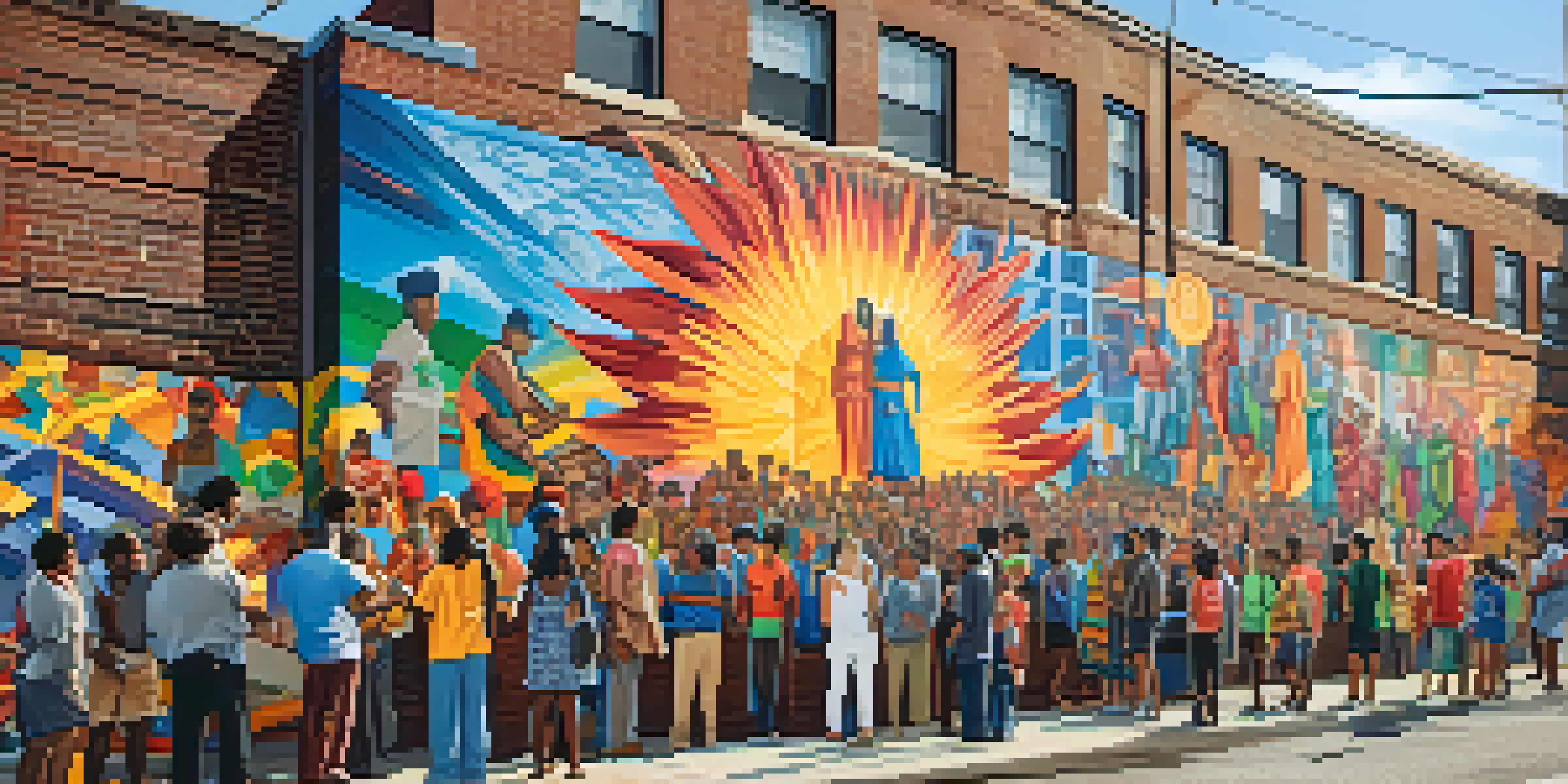The Evolution of Public Art: From Statues to Interactive Installations

Understanding Public Art: A Brief Overview
Public art encompasses a wide range of artworks created for public spaces, designed to be accessible to everyone. From grand statues in city squares to murals on building walls, these pieces often reflect the culture, history, and values of their surroundings. The beauty of public art is that it exists outside the confines of galleries and museums, inviting interaction and engagement in everyday life.
The Origins of Public Art: Statues and Monuments
Historically, public art has been dominated by statues and monuments, often celebrating historical figures or significant events. These structures served not only as artistic expressions but also as tools for storytelling, commemorating the past while shaping public memory. Imagine walking through a park and encountering a towering statue of a local hero; it sparks curiosity and conversation among passersby.
Public Art Reflects Community Values
Public art serves as a visual representation of the culture, history, and values of the communities it inhabits.
The Rise of Murals and Street Art
As societies evolved, so did the forms of public art we embraced. The rise of murals and street art in the late 20th century marked a shift towards more vibrant, expressive forms of creativity. These artworks often address social issues, give voice to underrepresented communities, or simply beautify urban environments, transforming dull spaces into colorful canvases that invite exploration.
Interactive Installations: Engaging the Audience
In recent years, public art has taken a more interactive turn, with installations designed to engage the audience in unique ways. Think of sculptures that respond to touch or light displays that change with the time of day. These pieces encourage participation, allowing viewers to become part of the artwork, fostering a deeper connection between the art and its audience.
Interactive Installations Engage Audiences
Recent trends in public art emphasize interactive installations that invite viewer participation and foster deeper connections.
Technology's Impact on Public Art
The integration of technology has revolutionized public art, opening doors to innovative experiences. Artists now use augmented reality, projections, and multimedia elements to create immersive environments that captivate viewers. This blend of art and technology not only enhances visual appeal but also allows for storytelling that evolves in real-time, keeping the audience engaged.
Public Art as a Tool for Social Change
Beyond aesthetics, public art has increasingly been recognized as a powerful tool for social change. Artists often tackle pressing issues like climate change, inequality, and community identity through their work. By sparking conversations and raising awareness, these installations can inspire action, fostering a sense of community and collective responsibility.
Art as a Catalyst for Social Change
Public art increasingly addresses social issues, inspiring action and promoting community engagement through creative expression.
The Future of Public Art: Trends to Watch
Looking ahead, the future of public art seems poised for even more transformation. Trends like eco-friendly installations and participatory art projects are gaining traction, inviting communities to take an active role in shaping their environments. As urban landscapes continue to evolve, public art will likely play a pivotal role in creating inclusive, engaging spaces that reflect the diverse voices of society.
Conclusion: Celebrating the Journey of Public Art
The journey of public art from statues to interactive installations reflects our changing culture and values. As art continues to evolve, it becomes a mirror of society, capturing our hopes, struggles, and aspirations. By celebrating this evolution, we not only appreciate the creativity of artists but also recognize the vital role public art plays in enriching our communities.